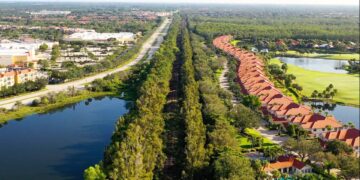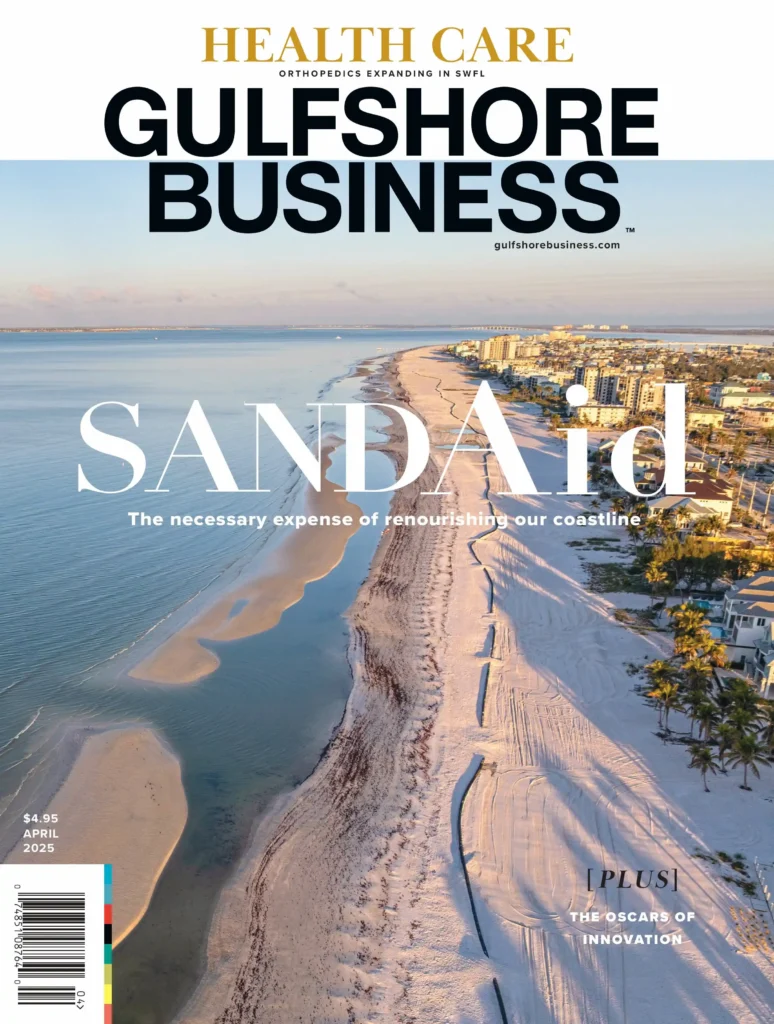Tony Lapi had a dilemma following Hurricane Ian. He could either rebuild the same footprint of 22 Beachview Cottages that were destroyed on Sanibel Island, or he could rebuild the resort farther back from the beach and construct something more resilient.
Lapi chose the latter path, which was why he also chose to rebrand the property, because there won’t be cottages anymore. When Stevens Construction finishes building, with a February 2026 delivery goal, the estimated $14 million project will be renamed White Pelican Villas.
“1979 was when we purchased it,” Lapi said of the property at 3325 W. Gulf Drive. “And it’s been a great performer. Because it was the way Sanibel used to be.”
 Rochester Realty Corp. paid $1.4 million for Beachview Cottages that year. The company, which also owns ’Tween Waters Island Resort & Spa on Captiva Island, rebranded about 10 years ago and became Sanibel Captiva Beach Resorts, to better catch the attention of prospective vacationers using Internet search engines.
Rochester Realty Corp. paid $1.4 million for Beachview Cottages that year. The company, which also owns ’Tween Waters Island Resort & Spa on Captiva Island, rebranded about 10 years ago and became Sanibel Captiva Beach Resorts, to better catch the attention of prospective vacationers using Internet search engines.
Beachview Cottages survived Hurricane Charley in 2004 but were destroyed by Hurricane Ian on Sept. 28, 2022.
“They were all blown away,” Lapi said. “Most of these cottages were across the street or blew into the house next door. Across the street. That’s how powerful that tsunami of a wave was during Hurricane Ian.”
 Lapi enlisted architectural firm Southview Studios LLC to do the architectural design. Architect Joleen Darragh said the biggest challenge was threading the needle between designing something that could withstand another Category 5 hurricane and a 15-foot storm surge with something aesthetically pleasing.
Lapi enlisted architectural firm Southview Studios LLC to do the architectural design. Architect Joleen Darragh said the biggest challenge was threading the needle between designing something that could withstand another Category 5 hurricane and a 15-foot storm surge with something aesthetically pleasing.
“It was tough,” Darragh said. “Because when I first did the original calculations, the height limit and the flood elevation, we were going to have 8-foot ceilings. That is not the appropriate grandeur for a new, modern resort. So, we had to look at creative ways to get that extra ceiling height. We ended up carving up into the attic space to bring those floors up a little bit. We ended up with 9-foot ceilings.”
Darragh also needed to build one building with the setback instead of 22, so she made an L shape. It’s basically three buildings tied together with a shared, covered walkway.
 “From a permitting standpoint, it’s considered one building because it’s tied together with those walkways,” Darragh said. “But we wanted to split it apart like that, so it wasn’t so monolithic. We used an aesthetic style of kind of the old Florida look. Kind of reminiscent to the old Florida design style. So, when you look at the building, you’re seeing those intricate details, and it takes away from the bulkiness of that strong structure.
“From a permitting standpoint, it’s considered one building because it’s tied together with those walkways,” Darragh said. “But we wanted to split it apart like that, so it wasn’t so monolithic. We used an aesthetic style of kind of the old Florida look. Kind of reminiscent to the old Florida design style. So, when you look at the building, you’re seeing those intricate details, and it takes away from the bulkiness of that strong structure.
“It’s going to be there forever.”
Mark Stevens, president of Stevens Construction, said his company will apply lessons learned from building the nearby Shalimar Beach Resort. Many of those lessons are beating the traffic to Sanibel, as the causeway gets backlogged by cars between about 8:30 a.m. and noon most days.
Building on the beach also means using concrete and steel pilings that are drilled into the ground. There are about 300 pilings under the White Pelican site.
 “The structure of the building is tied into those,” Stevens said. “Those go anywhere from 14 to 24 feet deep. And they will prevent the structure from basically moving up, down, sideways. Which is what we didn’t have pre-hurricane codes.”
“The structure of the building is tied into those,” Stevens said. “Those go anywhere from 14 to 24 feet deep. And they will prevent the structure from basically moving up, down, sideways. Which is what we didn’t have pre-hurricane codes.”
In addition to being resilient, with the floor elevated 20 feet above the ground level, Lapi wanted White Pelican Villas to be environmentally friendly.
There will be geothermal heating for the ventilation and air conditioning systems, as well as for the pool heating.
In addition, there will be turtle-friendly lighting.
 Of the 22 units, 10 will be 350 square feet and 11 will be 600 square feet. There will be a 2,100-square-foot, four-bedroom, four-bath deluxe villa with a full kitchen.
Of the 22 units, 10 will be 350 square feet and 11 will be 600 square feet. There will be a 2,100-square-foot, four-bedroom, four-bath deluxe villa with a full kitchen.
“It’s a big day,” Lapi said of celebrating the groundbreaking. “We are out of the ground. We should move faster now.”





